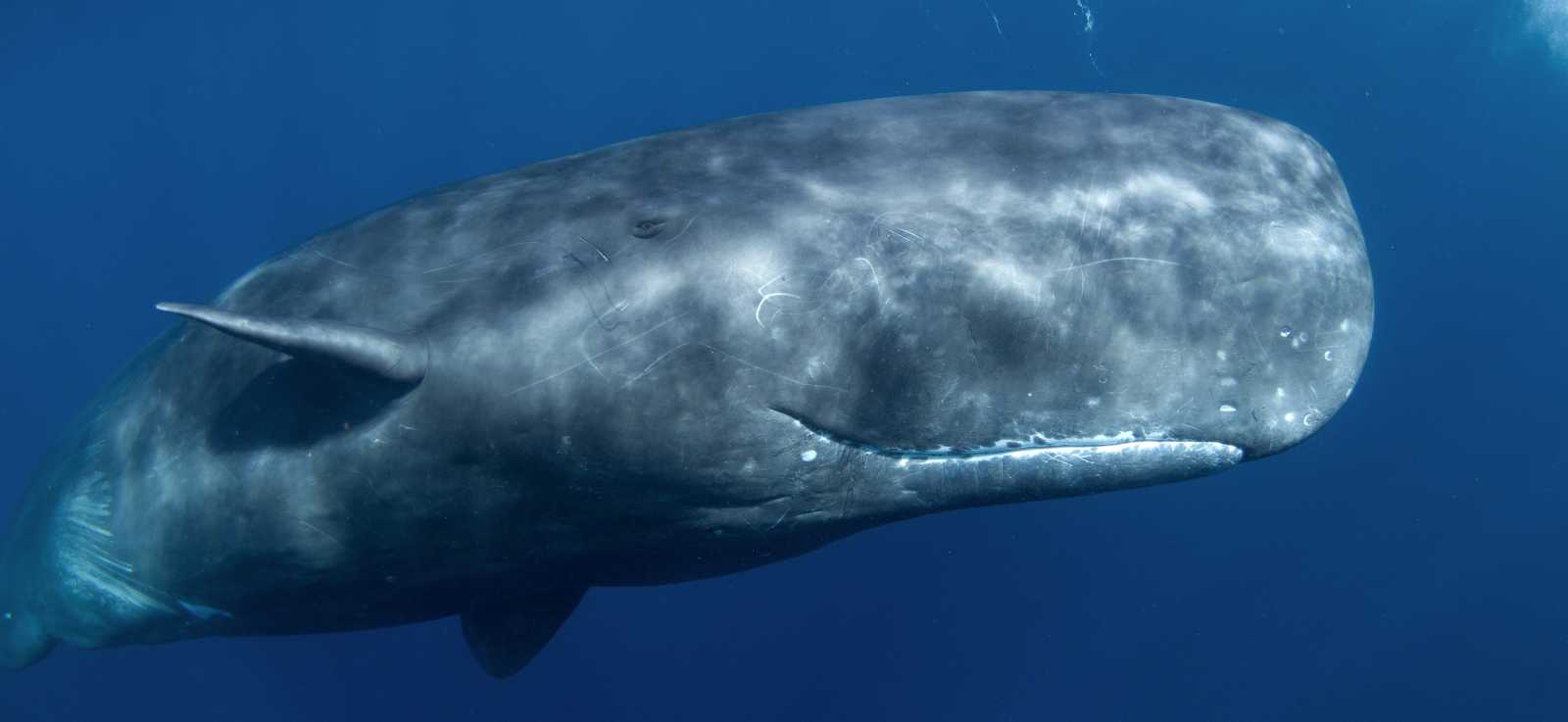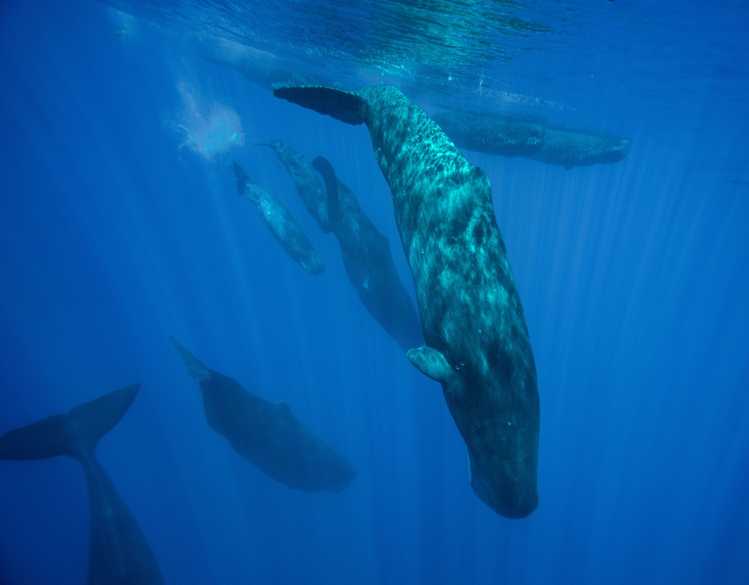
Sperm Whale
Physeter macroephalus
Learn More About Sperm Whales
Sperm whales are named after the waxy substance, spermaceti, found in their heads. These whales are the largest of the toothed whales. Males can reach 60 feet in length and smaller females reach 37 feet.
Sperm whales are dark gray in color, have a hump rather than a dorsal fin and have triangular shaped flukes, or tails. Just behind their large head (which is about one-third of their total body length!) their skin is wrinkled to increase surface area, leading to greater heat loss. This gives them a shriveled look.
These whales have a single, S-shaped blowhole located on the left side of the top of their head. This unique blowhole produces a distinctive angled spout, or blow. Males have about 40-50 teeth, located only in their narrow lower jaw and females have even less.
What do they sound like?
The greatest threats to marine mammals are caused by people, but we can also be their greatest champions.
Sign up for email from The Marine Mammal Center to stay updated on how you can be an advocate and champion for marine mammals like sperm whales.
Habitat & Population Status
Sperm whales can be found around the world but typically stay away from the extremely cold waters near the polar ice in the north and the south. Females usually remain in temperate and tropical waters within 45-55° latitude, whereas males travel in temperate waters. In California, sperm whales can be seen in waters off the continental slope from November to April.
Sperm whales prefer deep water around ocean trenches, where strong currents flow in opposite directions that bring concentrated nutrients to the area thus attracting a large number of creatures that the sperm whales can eat.
Sperm whales were heavily hunted from 1800 to 1987 for spermaceti, the substance found only in a sperm whale’s head and used in echolocation. They were also hunted for ambergris, a waxy substance used in making perfume, that forms around squid beaks in the whale’s digestive system.
Today sperm whales are classified as endangered. The species is slowly recovering from decades of hunting. It’s estimated that the population is about 850,000 individuals worldwide.

Breeding & Behavior
Mating occurs in spring and summer, and females carry their young for 14 to 16 months, giving birth every three to five years. Newborn calves are 13 feet long and weigh about a ton. These calves nurse for two years but may continue nursing with their mother intermittently for up to eight years.
Female and young male sperm whales are social with each other and are sometimes are seen in pods, or groups, of up to 50 whales. The females form matriarchal, or female-led, pods. The young males will often leave these groups to form bachelor herds until they are able to compete in mating at about 20 years old. Aside from the breeding season, adult males lead a solitary life.
Sperm whales are champion divers and are thought to dive to depths greater than 3,000 feet and can stay underwater for up to two hours. They impressively get to these depths in a matter of minutes.
Squid is a sperm whale’s favorite food and it’s suspected that they spend a lot of their dive time hunting for prey using echolocation. Sperm whales also produce a series of clicks called codas. Each whale has a distinctive coda and scientists think that sperm whales recognize each other by these clicks. There is also evidence that sperm whales produce intense bursts of sound to stun their prey.
The sperm whale is a species known for stranding in large groups. It is not known why they strand in this manner, but some theories include mass illness, parasitic infection, following a sick leader and echolocation malfunctions due to gently sloping beaches and underwater magnetic anomalies leading to disorientation.

















